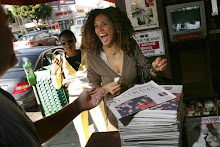Weekly NewsQuiz

This is a journalism class, so you are expected to keep up with the news every day. Read newspapers, watch TV news, check news websites (you can subscribe to email feeds from the New York Times, the Salt Lake Tribune, and many others), listen to National Public Radio (in Logan, 89.5 FM).
Each Thursday, Professor Pease will post a news quiz, which you will complete and return via Blackboard by Saturday @ 9 a.m.
The news quizzes will cover prominent international, national, regional, state and local Logan news stories. You are to explain what the news event is (“What?” “Where?” “Who?” and “When?”), and its significance (“So What?”).
For example: The following items might appear on a news quiz for this week (Aug. 16-22):
• Raucous town meetings on health care
• Who is Hillary Clinton, where is she this week, doing what?
• Mid-air collision over Hudson River in NYC.
• Michael Vick returns.
• Eunice Kennedy Shriver.
• Lawsuit filed in Michael Starks case.
• Change of leadership in Utah governor’s office.
And then there might be some IDs of prominent people from time to time.
• Who is Jon Stewart?
• Who is Sonia Sotomayor?
• Who is Arnold Schwarzenegger?
Before I tell you the answers to these, and how I’d like you to answer them, do you know what’s going on with these stories?
Here’s the kind of answers I’d like—not only identifying the subject, but explaining the significance—So what?
• Health Care meetings: Opponents of the Obama administration’s proposed comprehensive health care reform proposals have been flooding informational meetings by members of Congress, shouting down the lawmakers and generally acting boorish. Health-care reformers charge an organized campaign by conservative groups to derail the reform efforts.
• Hillary Clinton, the secretary of State, is wrapping up an 11-day tour to several African nations, talking trade, human rights and related issues.
• NYC air crash: Nine people were killed when a small private plane collided with a tour helicopter, plunging both into the Hudson River between New York City and New Jersey. Two air traffic controllers have been suspended, amid calls for new regulations over the crowded airspace.
• Michael Vick, the disgraced NFL star quarterback who spent nearly two years in prison in connection with a dog-fighting ring he organized, was signed this week by the Philadelphia Eagles. Many fans are disgusted.
• Eunice Kennedy Shriver, 88, sister of John, Bobby and Ted Kennedy, died this week. She was praised for her work in founding the Special Olympics and championing rights for the mentally handicapped.
• The family of Michael Starks sued USU this week over last November’s hazing death of their 18-year-old freshman son, who died after drinking vodka as part of a fraternity initiation.
• Utah Gov. Jon Huntsman Jr. resigned this week to become U.S. ambasssador to the People’s Republic of China; he was replaced by his lieutenant governor, Gary Herbert.
• And I'll let you figure out those IDs of prominent people.
Get it?
.



















